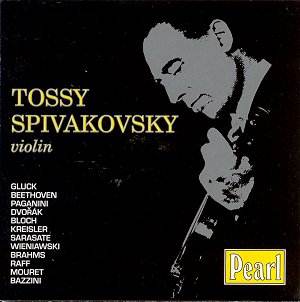 Composer: Felix Mendelssohn
Composer: Felix Mendelssohn
Works: The Hebrides – Overture, Op. 26; Symphony No. 3 in A minor – “Scottish,” Op. 56; Symphony No. 4 in A – “Italian,” Op. 90
Performers: Scottish National Orchestra/Sir Alexander Gibson; London Philharmonic Orchestra/James Lockhart
Recording: City Hall, Glasgow, 4.1975; Barking Town Hall, 6-7.1.1975
Label: EMI Classics for Pleasure
Felix Mendelssohn’s music, particularly his overtures and symphonies, embodies a rich interplay of emotional depth and picturesque landscapes, drawing from his travels and experiences. The “Hebrides” Overture, inspired by Mendelssohn’s visit to the Scottish isles, captures the sublime beauty and tempestuous nature of its surroundings. The “Scottish” Symphony, meanwhile, reflects not only the composer’s fascination with Scotland but also the Romantic ideal of infusing nationalistic elements within the symphonic form. This recording, featuring Sir Alexander Gibson leading the Scottish National Orchestra, offers a compelling exploration of these works, alongside James Lockhart’s interpretation of the “Italian” Symphony with the London Philharmonic Orchestra.
Gibson’s interpretation of the “Hebrides” is marked by a deft balance of drama and serenity. The opening evokes the calm before the storm, a stillness that belies the turbulent waters to come. Gibson captures the ebb and flow of the piece with a firm yet flexible tempo, allowing for the orchestral colors to emerge vividly. The storm sequences are thrilling, with the strings and brass demonstrating a visceral intensity that transports the listener into the heart of the tempest. The subtle nuances during the quieter passages showcase Gibson’s ability to maintain tension without sacrificing lyricism. This sensitivity is particularly evident in the delicate woodwind phrases that weave through the orchestral fabric, creating an atmosphere that is both haunting and reflective.
The “Scottish” Symphony stands as a testament to Mendelssohn’s unique voice within the symphonic tradition. Here, Gibson’s warmth and expansive phrasing breathe life into the sweeping melodies, imbuing them with a sense of celebration that feels quintessentially Scottish. The symphony’s opening fanfare is delivered with a noble grandeur, and the subsequent movements reveal a depth of emotion, particularly in the slow movement where the interplay between strings and woodwinds achieves a poignant beauty. The finale, often criticized for its perceived anti-climax, finds new life under Gibson’s baton. Rather than rushing to a predictable conclusion, he allows the themes to resonate fully, culminating in a triumphant resolution that feels earned and exhilarating. This performance embodies a romantic spirit that transcends mere technical execution, inviting the listener to partake in a communal experience of joy and triumph.
In contrast, Lockhart’s interpretation of the “Italian” Symphony, while spirited, lacks the nuanced connection that characterizes Gibson’s performances. The outer movements are executed with commendable vivacity; however, there is a noticeable absence of lyrical depth in the slower sections. The strings, while capable, fall into a routine that undermines the emotive potential of the music. Lockhart’s approach feels somewhat mechanical, as the orchestra, although technically proficient, does not engage in the same dialogue that one hears in Gibson’s interpretations. This performance serves as a reminder of the delicate balance required in orchestral conducting, where partnership and rapport between the conductor and orchestra are paramount.
The sound engineering of this recording, a hallmark of EMI Classics for Pleasure, captures the orchestra’s full sonority, though at times it edges toward overload, especially during the climactic sections of the “Hebrides.” This slight imbalance, however, adds to the excitement of the performance, creating an immediacy that enhances the listener’s engagement. The acoustic spaces of both venues, Glasgow’s City Hall and Barking Town Hall, lend themselves well to the repertoire, allowing for a vibrant soundscape that complements the emotional arcs of the music.
Gibson’s work with the Scottish National Orchestra during this recording period reveals a conductor deeply attuned to the music’s emotional core, forging a connection that resonates beyond the notes themselves. While Lockhart’s performance, although competent, does not reach the same heights, it serves as a contrast that highlights Gibson’s distinctive interpretative choices. The juxtaposition of these performances on a single disc underscores the enduring power of Mendelssohn’s music and the varied approaches of its interpreters. This recording not only illuminates the brilliance of the Scottish symphonic tradition but also memorializes the artistry of Sir Alexander Gibson, a figure whose contributions to the musical landscape deserve renewed recognition. The listener is left with a clear understanding of Mendelssohn’s genius and the interpretative possibilities that continue to inspire and challenge musicians today.



